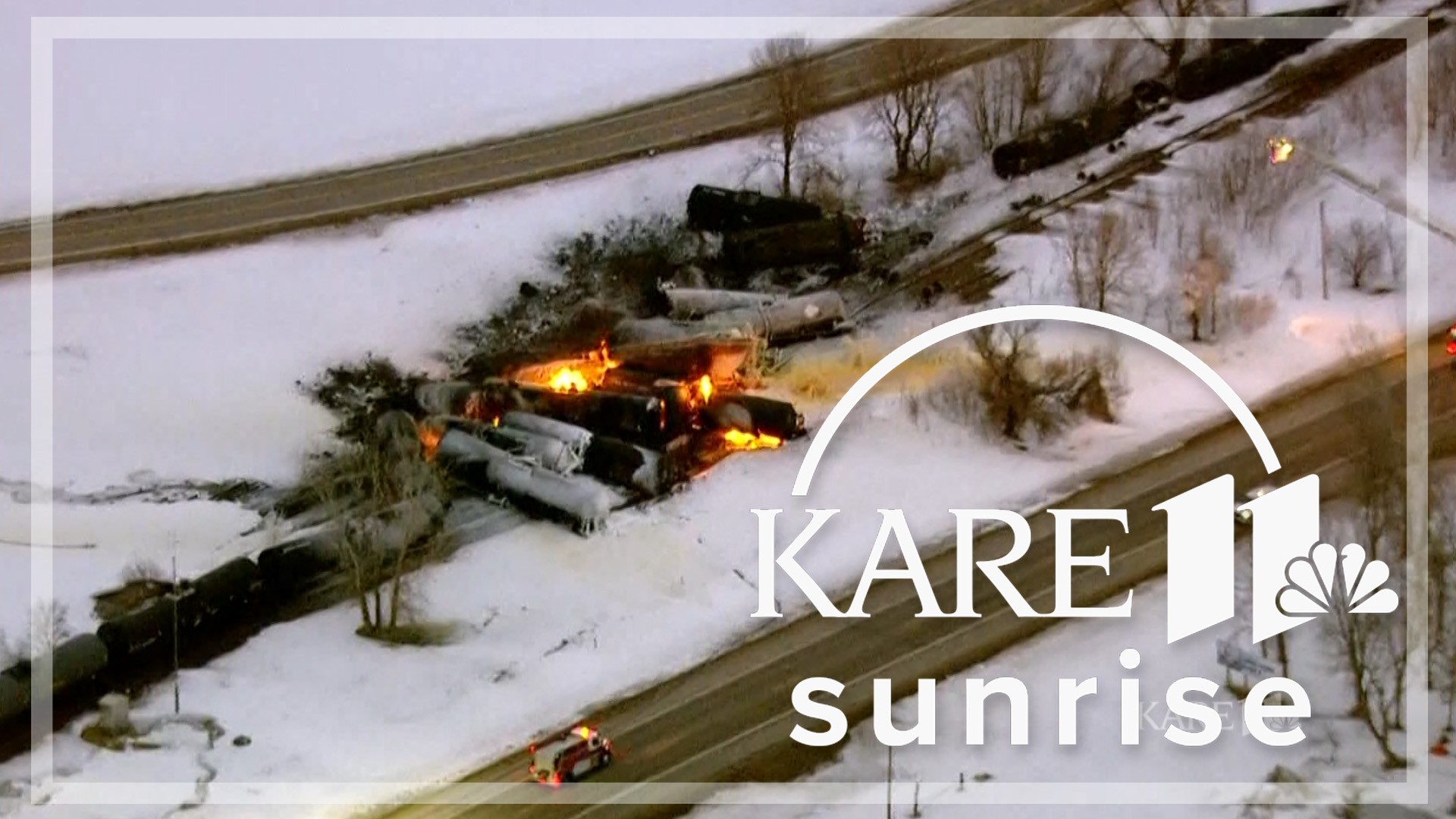RAYMOND, Minnesota — A train hauling ethanol and corn syrup derailed and caught fire in Minnesota early Thursday and nearby residents were ordered to evacuate their homes, authorities said.
The BNSF train derailed in the town of Raymond, roughly 100 miles (161 kilometers) west of Minneapolis, about 1 a.m., according to a statement from Kandiyohi County Sheriff Eric Tollefson.
This latest derailment happened as the nation has been increasingly focused on railroad safety after last month's fiery Norfolk Southern derailment that prompted evacuations in East Palestine, Ohio, near the Pennsylvania border.
Residents in that town of about 5,000 remain concerned about lingering health impacts after officials decided to release and burn toxic chemicals to prevent a tank car explosion. State and federal officials maintain that no harmful levels of toxic chemicals have been found in the air or water there, but residents remain uneasy.
The major freight railroads have said they plan to add about 1,000 more trackside detectors nationwide to help spot equipment problems, but federal regulators and members of Congress have proposed additional reforms they want the railroads to make to prevent future derailments.
BNSF said in a statement that 22 cars derailed, but that no injuries were reported due to the accident. EPA officials said on Twitter that four ethanol cars ruptured and caught fire in the derailment, and they continued to burn shortly before 10 a.m. Thursday morning.
“The main track is blocked and an estimated time for reopening the line is not available,” according to the statement from BNSF spokesperson Lena Kent. “The cause of the incident is under investigation.”
Homes in an area 1/2 mile (0.8 kilometers) around the site were evacuated, according to Tollefson, and residents were taken to a shelter in nearby Prinsburg.
U.S. Transportation Secretary Pete Buttigieg told CNN that about 14 cars were carrying hazardous materials. BNSF said the only hazardous material on board was ethanol.
“We’ve been in touch with the governor,” Buttigieg said, and Environmental Protection Agency officials were en route to the site “given the hazardous material situation.” The EPA started monitoring the air around the derailment for toxic chemicals by 6:30 a.m. Thursday.
Gov. Tim Walz said he would visit the site of the derailment with state emergency management officials Thursday morning.
The Federal Railroad Administration, the Pipelines and Hazardous Materials Safety Administration and the National Transportation Safety Board are all responding to the derailment, and the NTSB said a team will conduct a safety investigation into the derailment.
It doesn't appear likely that this BNSF train would have been covered by the additional safety regulations for high-hazardous flammable trains because those rules only apply when a train has either a block of 20 flammable liquid cars or more than 35 total flammable liquid cars on the train. Those rules that require additional safety measures and notice to states were developed after a string of fiery crude oil and ethanol derailments a decade ago.
Earlier this month, another BNSF train derailed in Washington and spilled 3,100 gallons of diesel fuel near the Swinomish Channel on that tribe’s reservation after a safety device meant to keep a train from crossing onto an open swinging bridge malfunctioned.
The Association of American Railroads trade group likes to tout that 99.9% of all hazardous materials shipments that railroads haul reach their destinations safety, but this Minnesota derailment and the one in Ohio demonstrate how even a single crash involving hazardous materials can be disastrous. Railroads say that safety has generally been improving over the years, but there were still more than 1,000 derailments last year, according to Federal Railroad Administration data.
Hazardous materials account for about 7% to 8% of the 30 million shipments that railroads deliver across the country every year.

